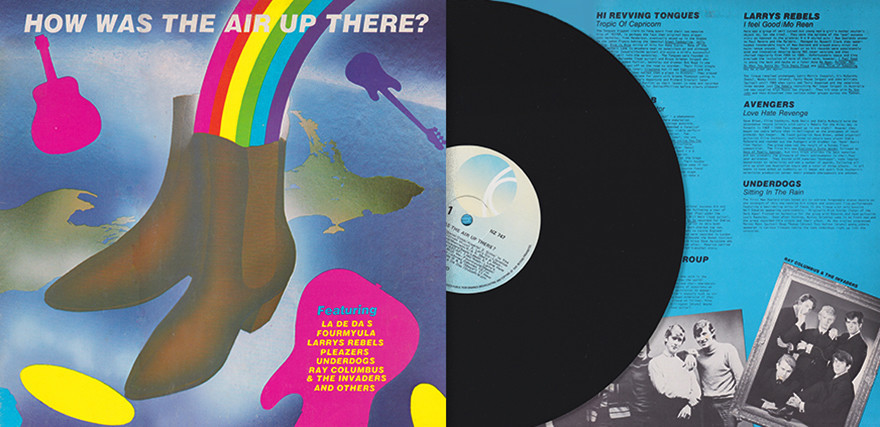
How Was The Air Up There? (K-Tel, 1980)
By late 1979 large parts of New Zealand’s musical past seemed to have been forgotten. Somehow a cultural amnesia had developed about a musical explosion that had, a little over a decade earlier, thrilled countless young people nationwide and created a flood of fine records.
Thankfully, they were not totally forgotten. Rhys Walker decided to address this neglect with a compilation album he called How Was The Air Up There?
The visit of The Beatles to New Zealand in 1964, and the beat and R&B bands that followed, opened the musical floodgates. This encouraged the small number of record companies – including HMV, who dominated the industry – to create a pop machine that gave us hundreds of pop records. Many were slight but some had lasting substance.
HMV became EMI in NZ in 1972 and throughout the 1970s they successfully remarketed the previous decade’s catalogue with assorted “Kiwi Hits” compilations featuring the likes of Mr Lee Grant, Shane, and Allison Durbin. You could be forgiven if, as a consumer in 1979, you thought that was the core of our 1960s musical past.
These rock’n’roll and R&B acts tried to make as much noise as possible and were often less than polite musically.
It wasn’t. Much of the music created between 1965 to 1969 had a more raucous edge, inspired equally by the touring UK bands The Pretty Things, Small Faces, The Who and The Rolling Stones. These rock’n’roll and R&B acts tried to make as much noise as possible and were often less than polite musically.
Several factors may have caused the cultural amnesia. Tastes had changed and in the 1970s, as with much of the world, New Zealand moved into the album era. The US, Australia and the UK had also left much of this era behind, although by the mid-70s superb compilations began to appear that reignited interest in 60s groups for a niche audience. However, the mix of folk-rock, glam rock, country rock, arena rock and prog-rock which dominated the contemporary rock and pop markets in each country didn’t leave much room for quirky 45s from the previous decade, and a niche was all they would ever be.
In New Zealand, the recording industry went into a slump in the mid-70s, driven by the 20% and then 40% sales tax on records. This saw the major labels retreating, and indies such as Zodiac and Viking shutting down or diminishing their pop output. One of the most locally active major companies in New Zealand, Pye, shut up shop in 1975-6, instantly closing the important Allied International catalogue that included acts on RCA NZ, Pye, Family and other labels dating back to 1960.
It was so bad the music awards were cancelled in 1977. On the handful of pure music radio stations in the metropolitan markets, playlists were a mix of mainstream rock and pop, soul and disco. In the regions, radio was monopolised by the MOR stations owned by BCNZ. There were no classic hits stations or their equivalents.
Almost nothing was written about the 1960s era and there was no outlet to hear this music. The only place to find much of it was in second hand and op shop bins.
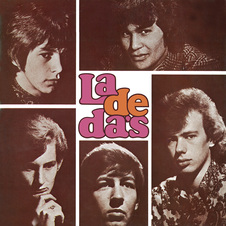
The iconic cover for The La De Da’s 1966 debut album, designed by Roger Bradley. Recorded at Zodiac Studios in Auckland, the album includes the La De Da’s classic version of ‘How Is The Air Up There’.
In 1976 the climate began to change when punk arrived. The provocative genre often referenced the garage and beat bands of the 1960s, and created an instant market for three-minute singles. New Zealand was no exception. Suddenly copies of albums by The Underdogs and The La De Da’s were being picked up at second-hand record stores around the country. The debut album by Ray Columbus and The Invaders (Zodiac, 1965), long deleted, featured as a collectable in a 1978 record auction organised by Rock’n’Roll Records, then on Auckland’s Queen Street.
Also, in June 1977 the nationally distributed Rip It Up magazine arrived. While it wasn’t openly championing the 60s records, it celebrated the art form of the 7” single.
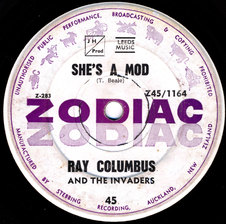
Ray Columbus and The Invaders - ‘She’s A Mod’ (Zodiac, 1964)
In mid-1978, a cover version of The Invader’s 1964 smash ‘She’s A Mod’ could be heard every weekend at Auckland punk club Zwines, as performed by Rooter (later The Terrorways). In the same year Citizen Band released ‘I Feel Good’ as a single. Their version referenced the version by Larry’s Rebels, rather than the 1966 US original.
Much earlier in the 1970s, while working at Festival Records in Auckland, Rhys Walker had an idea after meeting Phil Matthews, from Festival’s head office in Sydney. Walker recalls: “[He] was mostly responsible for signing deals with international labels like Atlantic, Stax, Island, A&M and a host of others. He had a great ear and was very ‘yoof-orientated’.
“Phil loved early Aussie rock and would pull out and play for me the (mostly unplayed) samples by the likes of Steve and the Board, the Purple Hearts, Jeff St John and Copperwine, The Valentines, Chain – too many to mention.
“Through him I came into the orbit of Glenn A Baker and Kevin Mueller – both later of Raven Records [the Australian reissue label in Melbourne]. Glenn wanted badly to re-package the early Aussie stuff the three of them loved, and Phil told me he was totally up for it. Glenn wanted one of the early Larry’s Rebel’s singles Festival had marketed here for Benny [Levin] and Russell [Clark’s Impact label] and I found him a copy.
“This was really the germ for How Was The Air Up There?”
Rhys Walker had an encyclopaedic knowledge of local and international garage bands and pop.
In 1971 Walker moved from Festival to become label and A&R manager at the Allied International /Pye company, run by Tim Murdoch. Prior to Festival, Walker had a history in retail, working at Lewis Eady’s Auckland record store while at university and then co-founding the ground-breaking underground store Taste Records in 1969 (with David Perkins and other partners). He had worked with bands and had an encyclopaedic knowledge of local and international garage bands and pop.
Glenn A Baker’s compilation So You You Wanna Be A Rock’N’Roll Star (subtitled The “Scream Years” Of Australian Rock 1964-1966) was released in 1974 by Festival Records. Its inspiration was the 1972 US garage compilation Nuggets: Original Artyfacts from the First Psychedelic Era, put together by musician/critic Lenny Kaye. Walker loved the attention to detail, the mix of hits with worthy non-hits and the informative track-by-track liner notes. In the UK, Decca had also released a double album they called Hard Up Heroes which was much the same.
Walker decided to do something similar in New Zealand. “I’d become aware of the wealth of material/tape reels Eldred [Stebbing] had at Zodiac and Phil [Warren] had in the old Cook St Market building, through working with bands at Pye/RCA and having a profile with people in the local industry.”
Walker was recording artists for Pye, often at Bruce Barton’s studio Mascot in Eden Terrace. “In Bruce’s control room there were tape boxes on shelves, and I recognised boxes marked ‘Troubled Minds’, ‘House of Nimrod’ and a couple of others. I asked who owned them and Bruce told me Phil Warren had paid for these recordings. A short time later, we started to use Stebbing’s.”

Record man Rhys Walker with his wife Margaret on their wedding day, two years after the release of How Was The Air Up There?
Walker was going to Stebbing’s studio often enough to become friends with Eldred and Margaret Stebbing and, in particular, their son Vaughan. Also at the studio a lot were Murray Grindlay, formerly of The Underdogs, and Mike Wilson (ex-Layabouts), wanting to record again.
“Eldred loved Murray and Murray thought [the compilation] was a great idea, spurring Eldred to go along with it. Consequently, Vaughan showed me around the room with all the tape boxes stored, and we started to sort out stuff for potential inclusion. We spent ages listening, it was marvellous fun.”
Walker found he had support in the industry. “Tim [Murdoch, from 1973 head of WEA NZ] also liked the idea of reissuing stuff we had both loved in our youth and, because of his position and one-on-one relationships with Eldred and Phil, I was able to persuade them that people were still interested in the likes of The Troubled Minds and The Layabouts.”
In 1973, Murdoch – having left Pye and with WEA still as just a marketing office via HMV – was not in a position to release the collection, now tentatively called How Was The Air Up There? but there was an unusual other option on the horizon.
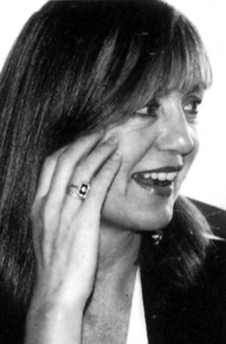
K-Tel marketing manager Diana Creighton. - Bryan Staff collection
K-Tel International was a Canadian company formed in 1962 by Philip Kives to telemarket goods. Its first product was a frying pan but in 1966 it released what is regarded as the world’s first themed compilation album, 25 Country Hits. By end of the decade, K-Tel had expanded globally including to Australia where Diana Creighton was the marketing manager. In 1971, the company created a New Zealand company in partnership with local entertainment mogul Sir Robert Kerridge (who owned 49%) and Creighton was offered the job of local manager. Headquartered in the 246 Building on Queen Street, where Kerridge based most of his other businesses, this was not Sir Robert’s first foray into the music business – he owned 51% of Festival Records via his Kerridge-Odeon company – but it was his first into TV marketing.
K-Tel’s first New Zealand release was the February 1972 compilation 20 Dynamic Hits, and it was a roaring success. It made the local record companies happy as it generated good royalty income in a reasonably new market. Until it shut down in New Zealand in 1996, K-Tel released a series of compilations that ranged from MOR quickies to great, often adventurous, compilations (eg, Breakdance, and a series of fine reggae collections).
They had one thing in common: they were astutely targeted at an audience that bought them in great numbers, not only from the record stores that Creighton serviced directly but also department stores, petrol stations and other retail outlets.
It would be another eight years before the record saw the light of day.
Creighton, outgoing and gregarious, was described as great fun by one industry insider. So when Walker talked to Tim Murdoch about his idea, Murdoch suggested he approach Creighton about releasing it. After all, compilations were her business.
“She was even keener to see a reissue than Tim was, hence we agreed to K-Tel issuing the album. I confess I regarded K-Tel’s output to date at the time with complete disdain – cheap, cash-in rubbish. But she was very enthusiastic.”
Despite the enthusiasm, it would be several years before the album saw the light of day. There were a number of reasons for this, mostly centred around Walker’s evolving career and the need to clear the track listing he had compiled.
In 1972, Walker moved to Melbourne. He was managing the Auckland band Cruise Lane (and producing them in Stebbing’s) when they supported the Australian band Daddy Cool at Auckland’s Carlaw Park and blew them off the stage. Daddy Cool’s managers and record company Sparmac then offered the band a contract and Walker a job in Melbourne. This included setting up an Australian office for the Denny Cordell and Leon Russell owned Shelter Records label. The band’s shift to Australia never really happened but Walker moved across, putting the compilation on the back burner.
Upon his return to Auckland, the project was revived, and he began to clear tracks. In those days, when the only local compilations were hits collections and the odd EMI in-house collection, it was a slow process. The concept was new and there was some resistance. Walker recalls, “I knew Nooky Stott and Terry Rouse [from Larry’s Rebels] from my Grammar schooldays, and they still had some cachet with Benny Levin and Russell Clark at [their label] Impact. Tim’s connections also helped.
“Negotiations with Paul Marks, Chants R&B’s former manager, were interminable – but we did it! I idolised the Chants, having seen them once live.
“There was/is so much to choose from there and sadly I had to omit The Bluestars, the Layabouts, et al, thinking that they could wait for a Vol II album, should the first one sell well. I think Eldred had tapes for a few bands Viking had paid for, like Hubb Kapp and the Wheels, which I used.
“I always regret Ron Dalton at Viking would not release The Dark Ages [‘Tomorrow’s Gonna Be Another Day’] in time.”
The final tracklisting
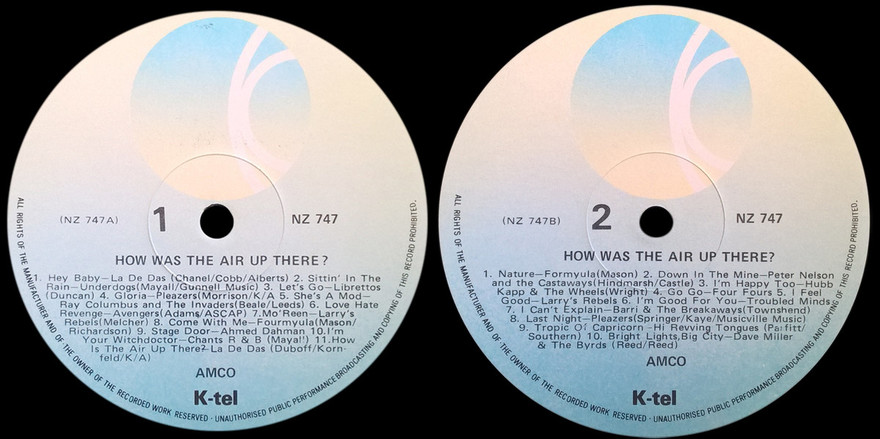
How Was The Air Up There? side 1 and 2 labels
The La De Da’s – Hey Baby (Philips/Zodiac, 1967)
The correctly celebrated and very stylish West Auckland R&B band with the very first New Zealand 45 to go to No.1 on an official singles chart, in 1967. Around this time The La De Da’s crossed the Tasman where they became stars, playing and recording well into the 1970s. A substantial reinterpretation of Bruce Channel’s 1962 US hit.
The Underdogs – Sitting In The Rain (Zodiac, 1967)
The Auckland blues band’s 1967 radio and TV hit, a John Mayall cover (the film clip, made for the Loxene Golden Disc, was the go-to filler for AKTV-2 for years). Resident at Auckland’s Shiralee and Galaxie, The Underdogs were the launchpad for many New Zealand musicians who became stars, mainstream and underground, in the 1970s.
The Librettos – Let’s Go (HMV, 1965)
The catchy theme to the 1965 NZBC pop show of the same name, oddly not released as a single. An impeccably dressed Wellington band, The Librettos moved to Sydney in March of that year but were still named New Zealand’s Best Group in a late 1965 award ceremony.
The Pleazers – Gloria (Zodiac International, 1965)
The Van Morrison/Them classic transplanted to New Zealand (just like this band, which was mostly Australian, except for Shane Hales). The Pleazers traumatised the media establishment and were banned from our screens for a spell. In the original liner notes to the compilation, Rhys Walker says he thinks this is better than the original. He may be right.
Ray Columbus & The Invaders – She’s A Mod (Zodiac, 1964)
Originally recorded by the Birmingham, UK, band The Senators and released in New Zealand as the Christchurch band’s sixth single by Zodiac in 1964. This was actually a bigger hit in Australia than New Zealand, reaching No.1 there in October that year.
The Avengers – Love, Hate, Revenge (HMV, 1968)
Originally released by US doo-wop group The Del-Satins in 1967, Wellington band The Avengers took their version from a US cover by Episode Six, a British group that included Ian Gillan and Roger Glover (Deep Purple) and John Gustafson (Roxy Music). A huge single for the HMV NZ band, it was written by the team who also gave us ‘Tie a Yellow Ribbon Round the Old Oak Tree’, ‘The Tra La La Song’ and ‘Sugar Sugar’.
Larry’s Rebels – Mo’reen (Impact, 1969)
The final single for Larry and The Rebels as a group before they split into two acts. This song was a 1967 single for Paul Revere & The Raiders, but Larry’s Rebels made it their irreverent own two years later. Written by The Raiders’ Mark Lindsay and their producer Terry Melcher (Doris Day’s son).
The Fourmyula – Come With Me (HMV, 1968)
Apart from releasing a string of infectious pop classics, Upper Hutt band The Fourmyula’s major claim to historical significance is legitimising the art of writing singles by New Zealand bands. While they were not the first to write their own songs, the Fourmyula was the first New Zealand act to write all its own singles, and classics they all are.
Ahmed Dahman Group – Stage Door (HMV, 1968)
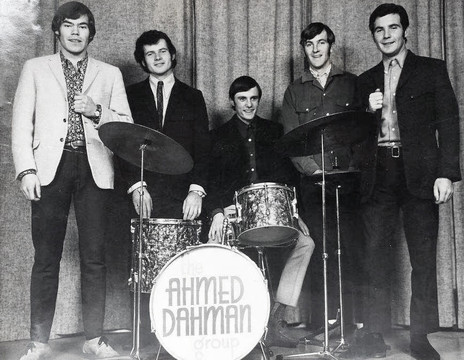
Ahmed Dahman Group. - Simon Grigg collection
From Palmerston North, this lovely Bee Gees-flavoured single was a massive local hit, selling thousands in the city and surrounds. They seem to have been more raucous in person, with the NZBC banning them from the broadcast of the 1968 Loxene Golden Disc.
Chants R&B – I’m Your Witchdoctor (Action, 1966)
Residents of Christchurch’s basement club, The Stage Door, this long-haired quartet scandalised the city. The second single from Chants R&B was a cover of a John Mayall song, but the band thought their version lost something in the pressing. The public disagreed and it’s long been regarded as one of the decade’s great proto-punk classics.
The La De Da’s – How Is The Air Up There (Philips/Zodiac, 1966)
The era-defining track that gave this collection its title and motivated countless young men and women to turn the distort effects and the volume up to 11. Originally recorded by US band The Changin’ Times, The La De Da’s version has been covered more than a few times over the years. Produced at Stebbing’s by former Joe Meek engineer John Hawkins, as were many of the tracks from the Zodiac catalogue listed here.
The Fourmyula – Nature (HMV, 1969)
Wayne Mason’s song was a huge airplay hit, with a now-lost video filmed in Wellington’s Botanical Gardens becoming an NZBC staple for many a year, and it was a hit again in 1992 for The Mutton Birds. Then, in 2001, APRA’s members named it as the top New Zealand song of the past 75 years.
Peter Nelson & The Castaways – Down In The Mine (HMV, 1965)
Like other Christchurch bands from Christchurch, Peter Nelson & the Castaways benefited from the US servicemen and women there with the US Deep Freeze programme. This single, delivered in a more classic R&B style than the Castaways’ local contemporaries, was the band’s third for HMV. The song was written by Peter Hindmarsh from Wellington band The Premiers.
Hubb Kapp And The Wheels – I’m Happy Too (Viking, 1965)
Hubb Kapp and the Wheels never really existed as such, instead they were an Australian band, The Defenders, who were briefly signed to Viking. When Viking wanted to change their name, the band said no and the label and the band parted ways. The after-story is that this, their only record, became one of the most collectable New Zealand 45s in the decades to come.
The Four Fours – Go Go (Zodiac, 1966)
It’s fair to say this Tauranga band moved with the times. Early records by The Four Fours were instrumental hits that owed a debt to The Shadows and The Ventures. But in 1964 they adopted a more contemporary Mersey-tinged beat sound and toughened up enough to support The Rolling Stones in early 1966, as heard on this disc, their third for Zodiac. They then mutated into The Human Instinct, possibly the finest New Zealand blues rock band of their era.
Larry’s Rebels – I Feel Good (Impact, 1966)
An Allen Toussaint song first recorded in New Orleans by Benny Spellman, oddly this garage anthem was not a local hit for Larry’s Rebels when first released but was both a live favourite and a chart hit 13 years later when covered by Citizen Band, who were very much referring to this version, not Spellman’s. Given that, a clever selection for this album.
Troubled Minds – I’m Good For You (Festival, 1969)
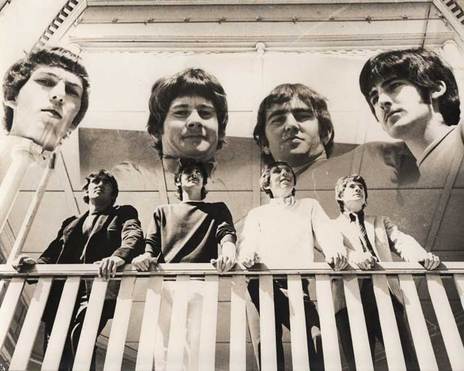
Napier band The Troubled Mind. - Keith Richardson collection
A Napier band that moved to Auckland in 1967, releasing a single for Zodiac in March the next year before joining the Phil Warren stable. This, their third 45, was written and produced – the latter without credit – by their manager Ray Columbus, and arranged by The Invaders’ Dave Russell. Credited on the label to The Troubled Mind (singular)
Bari & The Breakaways – I Can’t Explain (HMV, 1965)
The Pete Townshend song, and the last single by this famed New Plymouth band to feature Bari Gordon on vocals. After this they reverted to just The Breakaways and recorded their two LPs for HMV (now very valuable). From this band we got Midge Marsden, Dave Orams and Dave Hurley, all of whom went on to be major names in the decades to come.
Pleazers – Last Night (Zodiac International, 1965)
Eldred Stebbing created a special label for The Pleazers, the impressive sounding Zodiac International, and this, their debut single and a cover of a Merseybeats 45, was the label’s first release. Like the Pleazers’ other track on How Was The Air Up There? it’s better that the original. Rhys Walker had great ears.
Hi-Revving Tongues – Tropic Of Capricorn (Philips/Zodiac, 1968)
The Auckland band is best remembered now for the massive ‘Rain & Tears’ (originally by Aphrodite’s Child) but this earlier single, written by singer Chris Parfitt, is a close second and much more representative of the band’s live sound. Another Zodiac act, Hi-Revving Tongues captured the pop psychedelia of the moment perfectly and produced two fine albums along the way, the second without Parfitt.
Dave Miller & The Byrds – Bright Lights, Big City (Zodiac, 1965)
Christchurch band Dave Miller & The Byrds got into some strife over their name, which matched the US band of the same name. The first copies of this just credited The Byrds and it’s unclear whether the clash was accidental or cheeky – likely the former. This substantial local hit was originally written by US electric bluesman Jimmy Reed and released in 1961, and the New Zealand version (via The Pretty Things), on Zodiac, was a fine, albeit very Rolling Stones-ish, R&B remake.
Ray Columbus & The Invaders – Yo Yo (Zodiac, 1964)
Issued in Australia in late 1964 and in New Zealand, likely in January 1965, this was one of many Ray Columbus-Dave Russell compositions recorded by the Invaders, who were the first local act to issue an album of their own songs (appropriately called Original Numbers).
The How Was The Air Up There? tracklisting, masters (done at Stebbings), and liner notes were complete by the time Rhys Walker left New Zealand again at the start of 1980, this time to go to California. The cover for the compilation was not complete at the time he left, and the job was entrusted to one of the graphic and publishing legends of the 1970s New Zealand music scene, Roger Jarrett, editor of Hot Licks. Walker: “I trusted the cover art to Roger, who I will always remember fondly, but I have to say I hated the finished article. Still do.”
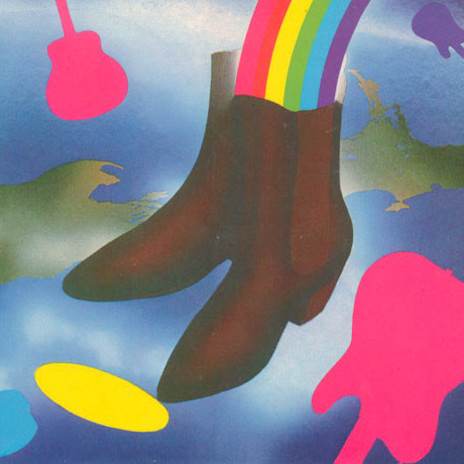
How Was the Air Up There? - Roger Jarrett design without cover lines.
It was an odd sleeve, a pseudo-psychedelic montage in a gatefold that confused 60s Beat imagery (the boots sketched by Roger Jarrett were mine, sketched on the counter at Taste Records where I worked) with a rainbow and it probably didn’t help sales.
Before ‘How Was The Air Up There?’ the likes of The La De Da’s and The Underdogs were op-shop mysteries.
However, what mattered was the music inside the cover. The above track listing was matched with great, revelatory, liner notes written by Rhys Walker; overnight these transformed a younger generation’s appreciation of the music found on the disc. Before How Was The Air Up There? the likes of The La De Da’s and The Underdogs were op-shop mysteries. There was literally no way before to know what the names meant, who they were and what their history was. To many, it also introduced acts such as Chants R&B and Troubled Minds: regionally significant but now obscure bands with killer records that time had forgotten.
How Was The Air Up There? was released in August 1980, into what should have been a very welcoming market. Garage bands were back in a major way, with Ripper and Propeller already releasing their punk and post-punk anthems and AK79 was an instant classic. (AK79 included the Terrorways’ cover of ‘She’s A Mod’.)
It was pressed by K-Tel at EMI and supported by assorted retailers around the country, with both Record Warehouse and Taste Records ordering decent quantities with enthusiasm and expectations of good sales.
It was not to be though. K-Tel, whose expertise was in quite a different style of compilation, had no idea what to do with it; without Walker to drive the marketing it mostly sat on the shelves and in the bins. (Walker would later return from the US and leave the industry; a second volume was compiled but remains unreleased.)
In Auckland, both the above stores did their own window and instore displays and sold a decent number to young punks and people who recalled the era documented on the record. But that was largely it as far as marketing went. There were no posters, there was no advertising anywhere, not even in Rip It Up magazine where it would no doubt have elicited interest and sales. The release largely disappeared from sight within a few weeks
Diana Creighton recalled in 2021 that she didn’t remember it being very successful at the time. However, Walker said in 2001, “K-Tel didn’t have any concept of how to promote it … the cover was an atrocity. Sales must have been severely hampered by the artwork.” It was quickly deleted and disappeared from the stores, possibly after just one pressing.
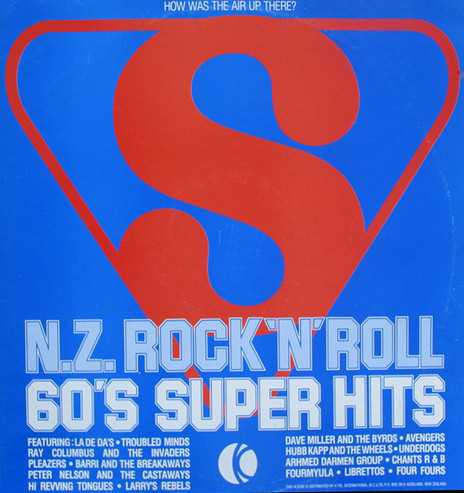
How Was the Air Up There? repackaged as NZ Rock’n’Roll 60s Super Hits (K-Tel, 1981)
Despite that, and for some long-lost unfathomable reason, K-Tel reissued it a year later, in late 1981, in a new – much worse – non-gatefold cover, with a facsimile Superman logo on the front, depleted liner notes and, bizarrely, a new title: NZ Rock’n’Roll 60s Super Hits. This time there was also a cassette edition. Did it do any better? Probably not because this “Super Hits” version seems only to have been sold in petrol stations, and chain stores such as Woolworths and Farmers. Again, it’s unknown how many it sold. Not many if its rarity in second-hand stores is any evidence: Discogs.com shows 96 of the original and some 20 only of this version in collections.
The record very quickly became hard to find – and collectable.
The upshot of the sales and marketing failures was that the record very quickly became hard to find – and collectable (especially in the original cover which ironically garnered some sort of iconic reputation with younger New Zealanders hungry for their past). The compilation became the default soundtrack to a new wave of books celebrating the era, including John Dix’s Stranded in Paradise in 1988, and the two Roger Watkins histories of 1960s bands, Hostage To The Beat and When The Rock Got Rolling.
That is, if you could get a copy. As the years rolled on, its value to collectors increased, and in the 1990s the album found its way onto online listings of wanted or pricey New Zealand releases.
In the early 2000s, EMI Records embarked on a New Zealand music reissue campaign on CD, and at the top of their list was How Was The Air Up There? In a project coordinated by EMI’s Bob Anderson (and overseen by then-EMI executive Chris Caddick) the company relicensed the tracks. They faithfully recreated the original artwork, licensing it from the Jarrett family as K-Tel was no longer trading in New Zealand. The album was reissued on CD late in 2001 and sold extremely well, pressed by Stebbing’s from the original masters. It could be found in record shops as a solid catalogue item until recent years.
Unfortunately, despite this, there was one major omission on the reissue: a formal credit to Rhys Walker, the man who, in the 1970s, had the foresight and vision to create, annotate and compile the album. Thanks to his knowledge and energy, How Was the Air Up There? changed the way New Zealanders listened to, thought about, and understood their musical past.
--